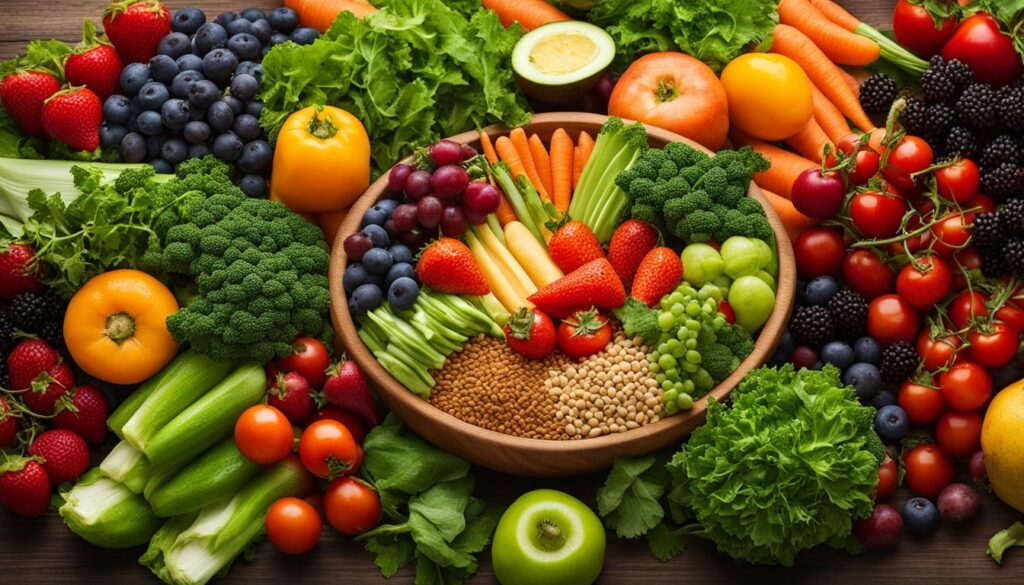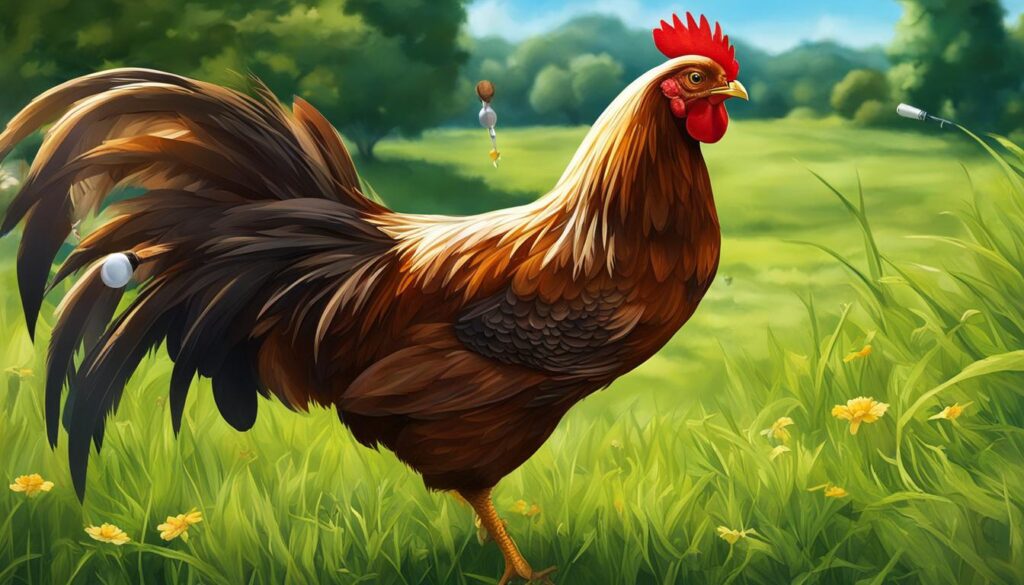As a hobby farmer, my connection with the land and its creatures has deepened, particularly with the presence of the charming brown bovan chickens in my backyard flock. Cherished for their resilience and productivity, these birds are a standout choice for fellow enthusiasts eager to embrace the fulfilling journey of raising poultry. Through this guide, I’m thrilled to convey the essential strategies and joys I’ve discovered while nurturing my own group of brown bovan chickens, with the hope of inspiring and assisting you in establishing a flourishing backyard haven for these feathered friends.
Key Takeaways
- Discover the joy and satisfaction of raising brown bovan chickens as a rewarding hobby.
- Learn how to prepare an ideal backyard habitat that supports the health and happiness of your flock.
- Gain practical insights from a seasoned hobby farmer’s firsthand experience with brown bovan chickens.
- Understand the fundamental requirements for nurturing and sustaining a productive backyard flock.
- Explore the characteristics that make brown bovan chickens a preferred breed among hobby farmers.
- Use this guide as a trustworthy companion in your poultry-raising adventure.
- Embark on a journey to successful chicken keeping with a breed known for strength and abundant egg-laying.
Understanding the Brown Bovan Chicken Breed
As a backyard farmer, I have always held a deep fascination for the brown bovan chicken breed, not just for their exceptional egg production but also for the rich history and characteristics that define them. Deeply rooted in practical breeding, these chickens are a testament to the meticulous efforts aimed at optimizing egg production. Adding bovan brown chickens to your flock could bring both robustness and a friendly atmosphere to your coop.
Origins and Characteristics
The bovan brown chickens, with their distinct reddish-brown feathers, were born out of a necessity for high egg yield. Embracing a slightly larger build than some other breeds, they quickly became a favorite in homesteads and small farms alike. Their physical traits lend themselves to more than just aesthetics; they play a crucial role in the hens’ hardiness and egg-laying consistency.
Bovan Brown Chicken Lifespan and Health
A bovan brown chicken lifespan can generally range between 6 to 8 years, a testament to their resilience when raised in favorable conditions. In my experience, their longevity is greatly influenced by genetics and the surrounding environment. Providing a balanced diet, enough room for exercise, and a stress-free living space, I’ve noticed my flock thrives and leads a healthy life.
| Aspect | Consideration |
|---|---|
| Nutrition | High-quality feed with sufficient protein |
| Exercise | Adequate space for free movement and behavior expression |
| Living Conditions | Well-ventilated, clean, and secure coop |
| Stress Management | Minimal changes in routine, gentle handling |
Behavior and Temperament
The behavior and temperament of brown bovan chickens truly set them apart. Not only are they docile, but their amiable nature makes them an ideal addition to flocks looking for a tranquil atmosphere. Their compatibility with other chickens and agreeable disposition facilitate easier handling for routine care, making them a pleasure to raise for seasoned hobby farmers and beginners alike.
- Friendly and docile nature
- Well-integrated into mixed flocks
- Less likely to engage in pecking order conflicts
Setting Up Your Backyard for Bovans Brown Chickens
When considering setting up a backyard for Bovans Brown Chickens, the emphasis is on creating an environment that caters to their needs for space, security, and comfort. My personal journey in crafting such a space has led to insights that I am eager to share with fellow hobby farmers.
Coop Design and Size Recommendations
A coop tailored to the unique needs of Bovans Brown Chickens means focusing on space and functionality. The coop design should allow for 2-3 square feet of space per chicken, ensuring they have room to roost and move about without stress. Inside, the coop should be outfitted with essential elements such as nesting boxes for egg-laying and roosting bars for nightly sleep. When planning your coop design, keep in mind the importance of good ventilation to facilitate airflow and maintain a healthy environment.
Outdoor Space: Fencing and Security
The chickens’ outdoor space requires careful consideration regarding fencing and security. In my experience, a predator-proof fence that extends underground thwarts burrowing animals, while overhead netting or coverage deters birds of prey. Daily inspections of this outdoor space for potential breaches ensure ongoing safety for your Bovans Browns.
Shelter and Protection from Elements
Chickens, like our Bovans Browns, need protection from the elements to thrive. This means constructing a shelter that offers shade during hotter months and warmth when the temperatures drop. A balance between insulation and ventilation within this shelter can prevent moisture build-up and keep ammonia levels down, subsequently reducing the risk of respiratory problems.
Feeding Your Bovan Brown Chickens
For my Bovan Brown chickens, crafting a diverse and nutritious menu is key to their health and egg production. Ensuring these birds get the proper chicken diet has practical implications directly related to their productivity and vitality. To aid fellow enthusiasts in feeding bovan brown chickens, I’ve put together a structured feeding guide that I adhere to within my flock management routine.

As these chickens grow, their dietary needs evolve. It is imperative to closely monitor and adjust their feed accordingly. I’ve learned that providing a balanced mix of layers pellets, wholesome grains, and fresh greens lay the groundwork for a robust diet. Moreover, I occasionally sprinkle in some protein boosts, especially mealworms, to keep their metabolism up and running efficiently.
Here’s what a typical weekly feeding chart looks like for my Bovan Brown chickens:
| Day | Morning Feed | Afternoon Treat | Comments |
|---|---|---|---|
| Monday | Layer Pellets | Chopped Greens | Rich in vitamins |
| Tuesday | Cracked Corn | Cottage Cheese | Calcium boost |
| Wednesday | Mixed Grains | Mealworms | Protein-rich |
| Thursday | Layer Pellets | Chopped Greens | Keep consistency |
| Friday | Wheat | Scraps from Garden | Resourceful treats |
| Saturday | Layer Pellets | Yogurt | Gut health support |
| Sunday | Barley | Boiled Eggs | Extra protein |
Water is on par with food when considering the impact on metabolic health and egg production. Therefore, I provide clean, fresh water daily, which is crucial for digestion and temperature regulation, especially in the layered approach of a Bovan’s diet. Through this intricate balance of nutrition and hydration, my Bovan Browns maintain optimal health and consistently reward me with their best egg-laying performance.
Health Management and Preventive Care
Ensuring the continued health of my backyard flock is a responsibility I take seriously. Effective chicken health management encompasses several critical practices, including vaccinations, parasite control, and routine health checks—all integral to maintaining a vibrant and healthy flock. I partner with a trusted veterinarian for expert guidance and adopt a holistic approach to prevent common chicken health issues, ensuring my chickens lead productive, disease-free lives.
Vaccinations and Parasite Control
I diligently follow a vaccination schedule tailored to my chickens’ needs, protecting them against potential outbreaks. My flock’s defense system is bolstered by vaccinations against respiratory diseases, Marek’s disease, and other common ailments. Additionally, I implement a strategic parasite control program to tackle external threats like mites and lice as well as internal adversaries such as worms. Regular treatments are part and parcel of my flock’s maintenance, creating a robust barrier against infestations.

Common Health Issues and Treatments
Despite the best preventive measures, my chickens occasionally encounter health setbacks. From respiratory infections to digestive disturbances, I’ve encountered a range of ailments. My approach to chicken treatments involves early detection and immediate care, often isolating affected birds to prevent the spread of disease. A well-stocked first-aid kit and the knowledge to administer treatments swiftly ensure rapid recovery and minimal flock disruption.
Regular Health Checks and Maintenance
Complacency has no place in flock maintenance. Routine chicken health checks are as regular as the sunrise on my farm, ranging from observing behavioral changes to inspecting physical conditions. I look out for signs of distress, poor weight gain, or drops in egg production. Keeping the coop clean and ensuring a balanced diet are fundamental practices that contribute to the overall health of my chickens. By being vigilant and proactive, I help to prevent problems before they start, laying the groundwork for a thriving flock.
The Brown Bovan Chicken Egg Production and Lifecycle
The fascinating cycle of life for brown bovan chickens is central to the satisfaction of raising these birds. Their reliable egg production is a testament to their value in a backyard flock. In my tenure as a hobby farmer, I’ve observed that the conditions under which these birds are raised—light, nutrition, and their stress levels—play critical roles in the consistency of their lay. By maintaining a stable, nourishing, and serene environment, I have enjoyed a continuous harvest of eggs, a clear indication of the effectiveness of routine care for these prolific layers.
Understanding Egg Laying Patterns
At the heart of the brown bovan chicken lifecycle is their egg-laying capability. Early on, I pinpointed that factors like the length of the day, the quality of their diet, and the overall tranquility of their habitat directly influence their egg production. Transitioning from longer days to shorter ones, I’ve seen changes in their laying patterns and have adapted by using artificial lighting to encourage continued laying. It’s rewarding to see the flock’s hard work come to fruition in the form of fresh, wholesome eggs almost daily.
Brooding and Rearing Chicks
There’s an undeniable charm when observing brooding chickens and the care they take to hatch their eggs. Deciding whether to let a hen hatch her chicks involves considering the goals I have set for my flock’s size and composition. When I opt for rearing chicks, it encompasses setting aside a safe brooding area, providing consistent warmth, and offering starter feed formulated for their growth. The developmental journey from a hatchling to a robust layer embodies the tangible rewards of rearing chicks, providing an endless cycle of renewal for my flock.
Managing Aging Chickens
As with all living creatures, there comes a time in the brown bovan chicken lifespan when they slow down. As egg production decreases with age, I’ve learned the importance of a thoughtful approach to aging chickens management. It’s essential to honor their contributions by ensuring they enjoy their later years in comfort, whether that involves allowing them to live out their days in the coop with younger generations or assigning them less arduous roles in the hierarchy of the chicken yard. Their well-being at every stage, especially as they mature, reinforces the cycle of life that defines my role as a dedicated steward to these endearing animals.
